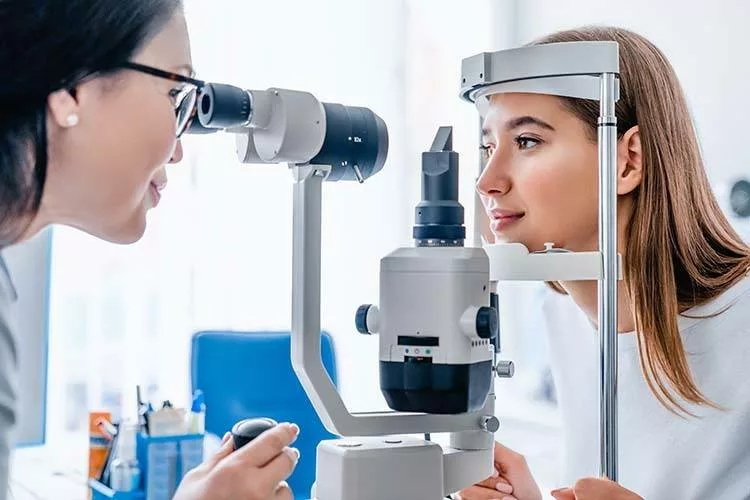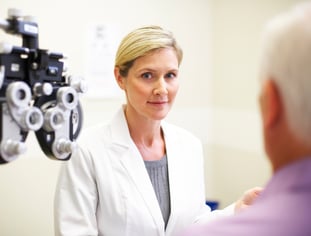Leading Factors to See an Optometrist Chino for Your Eye Health
Leading Factors to See an Optometrist Chino for Your Eye Health
Blog Article
Discovering the Most Current Technological Developments in Optometry and What They Mean for Optometrists
In the ever-evolving area of optometry, recent technical innovations are improving how practitioners come close to eye care. From the accuracy of Optical Coherence Tomography to the nuanced understandings offered by AI-driven analysis tools, these advancements are setting new criteria in client analysis and treatment. Teleoptometry is positioned to redefine ease of access, making certain that knowledge transcends geographical limitations. As these improvements permeate the technique, eye doctors are encountered with the challenge of accepting these devices to enhance individual end results. The concern continues to be: just how will these technological changes redefine the duties and duties within the profession?
Innovations in Diagnostic Tools
Advancing the field of optometry, developments in diagnostic tools have reinvented the method eye treatment experts examine and identify visual problems and eye problems. The past years has actually experienced considerable technological advancements, allowing more precise and detailed analyses. Optical Coherence Tomography (OCT), for instance, supplies high-resolution cross-sectional pictures of the retina, permitting the early detection of diseases such as glaucoma and age-related macular degeneration. This non-invasive imaging strategy has become essential in contemporary optometric technique.
Another key technology is the introduction of innovative corneal topography systems, which map the surface area curvature of the cornea with precision. These tools are particularly beneficial for fitting call lenses and diagnosing corneal conditions. Digital retinal imaging has actually changed standard ophthalmoscopy, supplying thorough, breathtaking views of the retina that assist in extensive aesthetic examinations.
The advancement of wavefront aberrometry has actually likewise been critical, making it possible for the evaluation of refractive errors with unrivaled precision (Eye Doctor Optometrist). This technology helps in personalizing rehabilitative lenses and boosting surgical results for refractive surgical treatments. Jointly, these diagnostic improvements encourage optometrists to deliver premium person treatment, guaranteeing early intervention and tailored therapy strategies, eventually boosting visual health and wellness outcomes
AI in Patient Management
Building on the foundation of sophisticated diagnostic tools, the consolidation of synthetic knowledge (AI) in person monitoring stands for a transformative jump for optometry. AI systems are increasingly utilized to boost effectiveness, accuracy, and customization in individual treatment. By assessing large quantities of data, AI can recognize patterns and anticipate prospective eye problems, enabling eye doctors to customize interventions more efficiently. This capacity is vital in managing persistent eye conditions such as glaucoma and diabetic person retinopathy, where early detection and continuous surveillance are essential.
In addition, AI-driven platforms help with streamlined patient interactions and administrative processes. Automated scheduling, digital examinations, and individualized follow-up strategies not just boost client fulfillment but also optimize time monitoring for practitioners. These systems can triage people based upon the necessity of their conditions, ensuring that those in critical need obtain punctual interest.
Additionally, AI boosts decision-making by providing optometrists with evidence-based suggestions and treatment pathways. By incorporating data from electronic wellness documents, AI devices supply insights that educate professional decisions, lowering the risk of mistakes and enhancing individual outcomes. As AI proceeds to evolve, its role in client administration will likely increase, improving the landscape of optometric care.
Breakthroughs in Retinal Imaging
In the realm of optometry, retinal imaging has actually seen exceptional technological advancements that are improving analysis capabilities and client treatment. Developments such as Optical Comprehensibility Tomography (OCT) and fundus photography have reinvented exactly how optometrists evaluate the retina and picture. OCT, particularly, offers high-resolution, cross-sectional pictures of the retina, allowing for the in-depth evaluation of its layers. This capability is important for early detection and management of problems like glaucoma, diabetic person retinopathy, and age-related macular deterioration.
Enhanced imaging modalities like OCT angiography are additional refining analysis accuracy. Eye Doctor Optometrist. Such developments assist in the recognition of min retinal adjustments that can represent illness progression.
Additionally, developments in expert system are enhancing retinal imaging by enabling computerized analysis of large datasets. These systems assist optometrists in identifying patterns a measure of pathology, therefore improving diagnostic precision and performance. Jointly, these developments are transforming retinal imaging right into a cornerstone of contemporary eye care, boosting results and broadening healing opportunities.
Teleoptometry's Growing Function
Teleoptometry is increasingly coming to be an essential element of eye care, driven by advancements in electronic communication and diagnostic devices. This is specifically valuable in country and underserved locations where accessibility to specialized eye care is usually restricted.
The combination of expert system (AI) further boosts teleoptometry, allowing the analysis of aesthetic data and helping in the detection of eye conditions such as glaucoma and diabetic person retinopathy. AI-powered algorithms can swiftly translate intricate imaging data, giving optometrists with valuable insights that strengthen medical decision-making.
Moreover, teleoptometry supports connection of care with smooth integration with digital health records (EHRs), permitting optometrists to preserve thorough client backgrounds. When consulting with various professionals., this ensures that clients obtain consistent and customized care even.
In spite of these benefits, obstacles continue to be, including guaranteeing information protection and managing patient expectations. Nonetheless, teleoptometry stands for a substantial stride in the direction of even more obtainable, efficient, and patient-centered eye care. As innovation advances, its role is poised to expand further.

Future Trends in Eye Care
A myriad of innovative fads is readied to improve the future of eye care, driven by technological advancements and the evolving demands of people. One substantial pattern is the combination of expert system (AI) in diagnostics, which assures to boost the precision and efficiency of eye examinations. AI formulas can examine large amounts of information from retinal pictures, potentially detecting problems like diabetic retinopathy and glaucoma earlier than typical methods.
Moreover, personalized medication is getting traction in optometry, with hereditary screening educating personalized treatment strategies. This method aims to maximize client end results by customizing interventions to private genetic accounts. Wearable technology, such as clever get in touch with lenses, is also on the perspective, providing real-time surveillance of intraocular pressure or sugar levels, therefore providing continual insights right into systemic and ocular health.
The adoption of increased reality (AR) and digital reality (VIRTUAL REALITY) in training and patient education is an additional emerging pattern. These technologies provide immersive experiences that can boost understanding and abilities both for individuals and optometrists. As these patterns advance, optometrists have to stay abreast of technological innovations to offer sophisticated care, guaranteeing better patient results and satisfaction in the dynamic imp source landscape of eye treatment.
Verdict

Jointly, these diagnostic advancements encourage eye doctors to deliver superior person care, making sure early treatment and tailored therapy approaches, inevitably enhancing visual wellness results.

As these technologies continue to progress, eye doctors must adapt and include them right my blog into practice, inevitably enhancing process performance and elevating the requirement of eye treatment supplied to patients.
Report this page